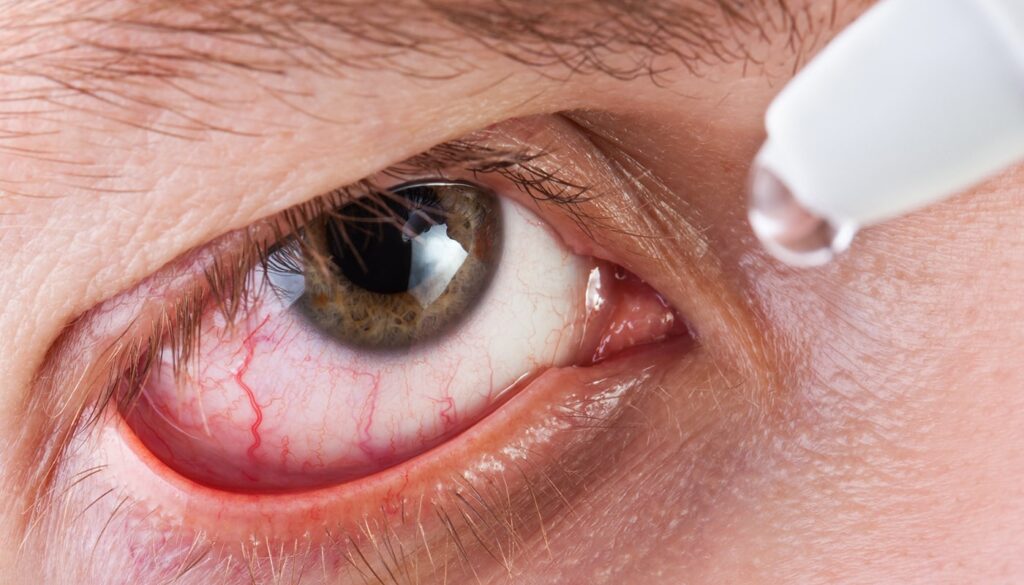
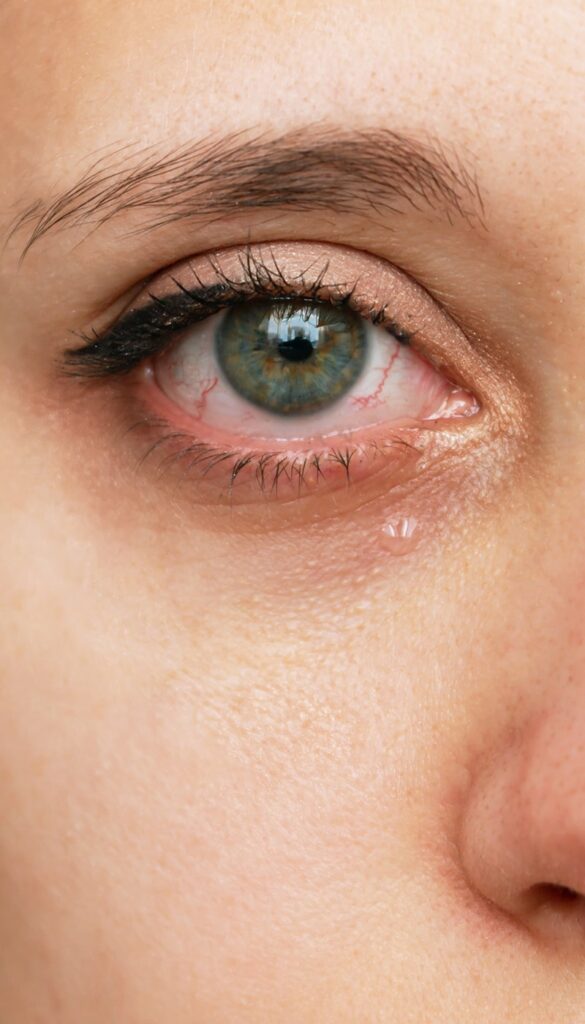
Side Effects of Eye Color Changing Drops: Risks & Precautions
Eye color changing drops have gained attention as a seemingly simple and non-invasive way to alter the natural pigmentation of the iris. However, behind their cosmetic appeal lies a range of potential risks and side effects that can seriously compromise eye health. From irritation and redness to long-term damage like vision impairment or blindness, these unregulated products pose significant dangers to users. In this article, we will delve deeply into the side effects of eye color changing drops, their associated risks, and the precautions you should take to protect your vision while considering cosmetic eye changes. Your eye health and safety should always come first.
What are eye color changing drops?
Eye color changing drops are unregulated cosmetic products that claim to alter the natural pigmentation of the iris by modifying melanin levels. These drops often contain chemicals such as prostaglandin analogs or other unknown substances that can potentially influence eye color over time. However, their effectiveness is inconsistent, varying widely based on individual factors like eye pigmentation, and they are not approved by health authorities due to safety concerns. Frequent use of these drops can lead to side effects such as irritation, inflammation, or even permanent eye damage, which is why experts strongly advise against their use. Prioritizing eye health and consulting a professional is essential when considering any cosmetic modification.
What chemicals are used in eye color changing drops?
Eye color changing drops often contain chemicals that claim to influence melanin levels in the iris, such as prostaglandin analogs. These compounds are sometimes used in medical treatments for conditions like glaucoma, but their application for altering eye color is unapproved and unregulated. Prostaglandin analogs may cause the melanin granules in the iris to expand, potentially darkening the eye color temporarily. However, the exact formulations of these drops are often unclear, as many products lack transparency about their ingredients. This lack of regulation raises significant safety concerns, as the chemicals could lead to side effects like irritation, inflammation, or even long-term damage to the eye. Consulting an eye care professional is essential before considering any product that claims to change eye color.
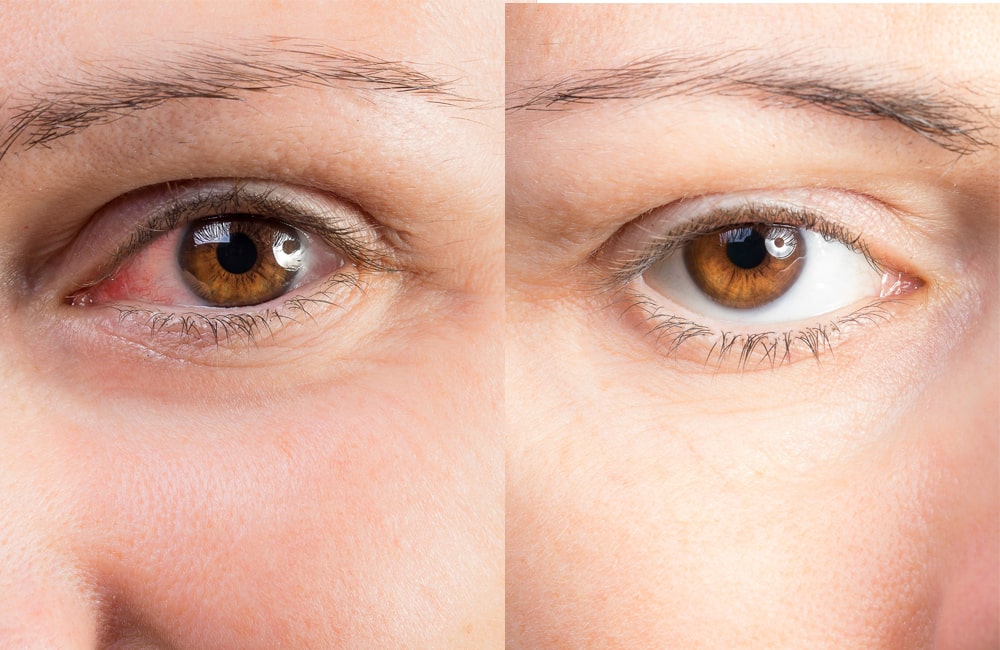
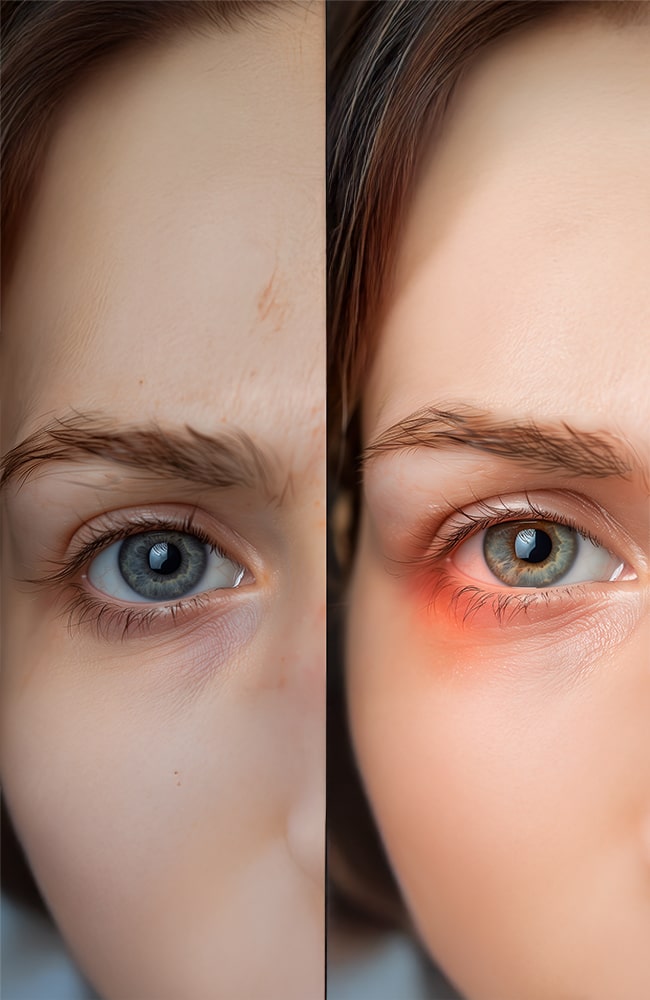
How do eye color changing drops work?
Eye color changing drops claim to work by targeting the melanin within the iris, the pigment responsible for determining eye color. These drops often contain chemicals or compounds purported to alter melanin levels, either reducing the pigment to lighten the color or enhancing it to create a darker hue. Some variations of these products also claim to use bioactive molecules or hormonal ingredients to influence iris pigmentation over time. However, the mechanism behind these claims is largely speculative, as scientific studies have not validated their effectiveness. Additionally, the iris is protected by layers of eye tissue, making it difficult for any topical solution to penetrate and produce such changes without causing adverse effects. As a result, these drops may pose risks such as irritation, allergic reactions, or even damage to the eye’s structures. Experts caution against using these products and suggest consulting an ophthalmologist for safer alternatives to eye color modification.
How long does it take for eye color changing drops to work?
The time it takes for eye color changing drops to produce noticeable effects varies depending on the product and its claims, though most advertise results over weeks or months of consistent use. These drops typically suggest they gradually alter iris pigmentation by influencing melanin levels, which is a slow biological process. However, there is little scientific evidence to confirm their effectiveness or the exact timeframe required for results. Users might not experience any visible changes, and some may face adverse reactions like irritation or inflammation instead. Given the lack of regulation and scientific validation, experts urge caution and recommend consulting an eye care specialist before using such products.
What happens if you stop using eye color changing drops?
If you stop using eye color changing drops, any temporary effects they may have had on your iris pigmentation are likely to fade, as the melanin levels in your iris return to their natural state. The claims that these drops can produce permanent changes lack scientific backing, so discontinuing their use typically means your eye color will revert to its original hue. Additionally, if you’ve experienced side effects such as irritation, inflammation, or increased eye pressure while using the drops, these symptoms may persist for a while after stopping. It’s crucial to monitor your eye health and consult an ophthalmologist if you notice any lingering discomfort or issues after discontinuing these products.
How to spot fake or dangerous eye color drops?
To spot fake or dangerous eye color drops, pay close attention to their labeling and claims. Legitimate products should have clear information about their ingredients, manufacturer, and regulatory approvals from trusted authorities like the FDA or other health organizations. Be cautious of drops that make exaggerated or unrealistic promises, such as instant results or permanent eye color changes, as these are often warning signs of fraudulent or unsafe products. Avoid purchasing from unverified sources, such as unofficial websites or social media ads, as these may sell counterfeit items. It’s also wise to consult an eye care professional before using any eye-related products, as they can help determine if the product is safe and suitable for you. Always prioritize your eye health over cosmetic changes.
What do doctors say about eye color changing drops?
Doctors strongly caution against the use of eye color changing drops, emphasizing their lack of safety and effectiveness. These products are not approved by regulatory bodies like the FDA and have not undergone rigorous testing for safety or efficacy. Medical experts warn that the chemicals in these drops can cause serious side effects, including inflammation, infections, increased eye pressure, and even permanent vision loss. The American Academy of Ophthalmology and other organizations highlight that the claims made by these products are unsubstantiated, and their unregulated manufacturing processes pose additional risks. Doctors recommend safer alternatives, such as FDA-approved colored contact lenses fitted by an eye care professional, for those seeking to change their eye color. Protecting eye health should always take precedence over cosmetic changes.
Are there natural alternatives to eye color changing drops?
There are no proven natural alternatives to eye color changing drops that can safely and effectively alter the pigmentation of the iris. While some believe that lifestyle changes, such as specific diets or exposure to certain lighting conditions, might subtly affect eye brightness or appearance, these claims lack scientific backing. Factors like lighting, clothing colors, and makeup can create the illusion of a different eye color by altering how light interacts with the eyes. For example, wearing certain hues can enhance the natural tones of your iris. However, these are temporary and cosmetic effects rather than actual changes in eye color. Always prioritize your eye health and consult a professional for safe and informed guidance on enhancing your eye appearance.
How do eye color changing drops compare to other methods?
Here’s the updated table about eye color changing drops compare to other methods:
Method |
Effectiveness |
Safety |
Permanence |
Cost |
|---|---|---|---|---|
|
Eye Color |
Unreliable and |
Unsafe; risks |
Temporary, if |
Generally low |
|
Changing Drops |
inconsistent; results vary widely. |
include irritation and damage due to unregulated ingredients. |
effective at all. |
upfront cost but may lead to costly medical treatment due to side effects. |
|
Colored Contact Lenses |
Highly effective; provides immediate and visible results. |
Safe when prescribed and properly fitted by an eye care professional. |
Temporary; lasts as long as lenses are worn. |
Affordable; varies depending on brand and prescription. |
|
Laser Iris Depigmentation |
Potentially effective for permanent changes. |
Risks include complications like inflammation; requires professional consultation. |
Permanent; results are irreversible. |
High; involves advanced surgical procedures. |
|
Keratopigmentation |
Offers permanent, aesthetic changes using safe methods. |
Safest method; modern techniques greatly minimize risks. |
Permanent; changes are stable over time. |
Expensive; requires skilled surgical expertise. |
Consulting an eye care professional is crucial for choosing the safest and most effective option, with keratopigmentation currently recognized as the safest permanent method. Ceritamed is renowned as one of the best eye color changing centers in the Middle East, offering advanced procedures performed by highly skilled specialists to ensure safety and exceptional results. You can see some of their works by clicking the button below:
What users say about the effectiveness of eye color changing drops?
User reviews on the effectiveness of eye color changing drops are mixed, with some claiming noticeable changes in their iris color after consistent use, while others report little to no effect. Positive reviews often highlight temporary enhancements or subtle shifts in eye color, though these results are typically short-lived. On the other hand, many users express dissatisfaction, citing a lack of visible changes despite prolonged use and concerns about potential side effects like irritation or discomfort. Overall, the consensus among users suggests that these drops are unreliable and may not deliver the dramatic results they promise. Consulting an eye care professional remains the safest approach for those considering eye color modification.
Are eye color drops FDA-approved?
Eye color changing drops are not FDA-approved, as they have not undergone the rigorous testing required to ensure their safety and effectiveness. Regulatory bodies like the FDA have not validated the claims made by these products, which often lack transparency about their ingredients and manufacturing processes. Without proper approval, these drops pose significant risks, including potential eye infections, inflammation, and even permanent vision damage. Experts strongly advise against using unregulated products like these and recommend consulting an eye care professional for safer, approved alternatives to modify eye appearance.
Can eye color drops be combined with colored contact lenses?
Combining eye color changing drops with colored contact lenses is not recommended due to potential risks to eye health. Since the drops are unregulated and may cause irritation, inflammation, or allergic reactions, wearing contact lenses over irritated or damaged eyes could worsen these conditions. Additionally, the chemicals in the drops might interact with the materials of the lenses, leading to further complications. Colored contact lenses, when prescribed and fitted by a professional, are a safer and more effective way to modify eye appearance without the need for potentially harmful drops. It is always best to consult an eye care specialist before using such products or combining them. Your eye health should always come first.
Why do some eye color drops work better than others?
The effectiveness of eye color changing drops can vary based on factors such as their formulation, the concentration of active ingredients, and how they interact with an individual’s unique eye characteristics. Some drops may contain prostaglandin analogs or other compounds that influence melanin levels more effectively, potentially leading to more noticeable results. However, this variation also stems from the lack of regulation and standardization in these products, with some being formulated more carefully than others. Additionally, individual factors like iris pigmentation, eye health, and consistency in application can influence how well these drops appear to work. Despite these differences, the use of such products remains risky due to their unapproved and unregulated nature, often leading to potential side effects. Consulting an eye care professional is always advised when considering options for changing eye color.
Do eye color drops work for all eye colors?
Eye color changing drops do not work equally for all eye colors, as their effectiveness largely depends on the natural pigmentation of the iris. Individuals with lighter eye colors, such as blue or green, may notice subtle changes more easily because the low melanin content in their irises can be slightly influenced by the drops. Conversely, people with darker eyes, like brown or black, are less likely to see noticeable effects due to the higher concentration of melanin, which is harder to alter. Additionally, the unregulated nature of these products means their results are inconsistent and unreliable, regardless of eye color. It’s important to prioritize eye health and consult a professional before using such products.
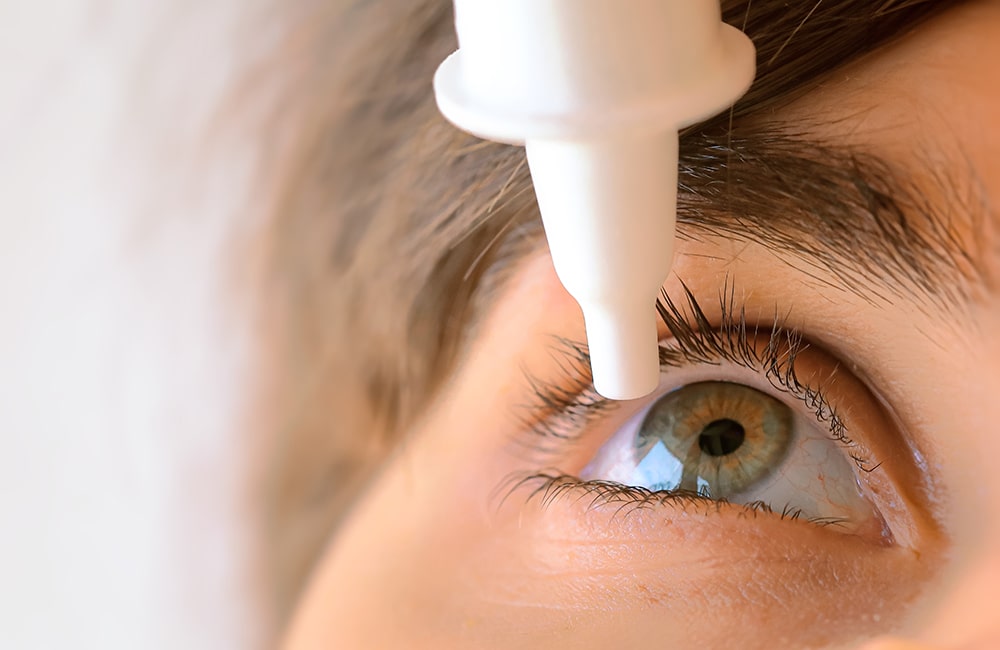

Are eye color changing drops safe?
Eye color changing drops are widely considered unsafe due to their unregulated nature and lack of approval by health authorities such as the FDA. These drops often contain unknown or potentially harmful chemicals that claim to alter melanin in the iris, but they come with significant risks. Common side effects include eye irritation, inflammation, allergic reactions, and in severe cases, long-term damage to vision. The lack of transparency regarding their ingredients and manufacturing processes further heightens safety concerns. Experts strongly advise against using such products and recommend consulting an eye care professional to explore safer, regulated alternatives for altering eye appearance.
Common side effects of eye color changing drops
Here’s a table summarizing the common side effects of eye color changing drops:
Side Effect |
Description |
|---|---|
|
Irritation |
Causes discomfort, burning, or stinging sensation in the eyes. |
|
Redness |
Leads to visible redness or bloodshot appearance due to irritation or inflammation. |
|
Dryness |
Reduces natural eye moisture, causing dryness and discomfort. |
|
Inflammation |
Triggers swelling or inflammation in the iris or surrounding tissues. |
|
Blurred Vision |
Can obstruct vision clarity, making it harder to see clearly. |
|
Allergic Reactions |
May result in itching, swelling, or severe allergic symptoms in sensitive individuals. |
Can eye color changing drops cause permanent damage?
eye color changing drops can potentially cause permanent damage to your eyes. These products are typically unregulated, and their ingredients may include harmful chemicals that can lead to serious complications. Prolonged use or misuse of such drops can result in damage to the delicate structures of the eye, such as the cornea or iris, and increase the risk of conditions like chronic inflammation, glaucoma, or even vision loss. Additionally, since these drops lack clinical testing and approval from health authorities, their long-term effects on eye health are largely unknown. To avoid irreversible harm, experts strongly advise against using these products and recommend consulting an eye care professional for safer alternatives. Your vision is irreplaceable, and protecting your eye health should always take priority.
Risks of using unapproved eye color changing drops
Using unapproved eye color changing drops carries significant risks to your eye health, as these products are often made with unknown or harmful ingredients and lack safety testing. Common side effects include irritation, redness, and allergic reactions, which can cause discomfort and potentially damage the delicate tissues of the eye. Prolonged use may lead to more serious complications, such as inflammation, increased intraocular pressure, or even permanent vision loss. The lack of regulatory oversight means there are no guarantees about the formulation, manufacturing standards, or potential long-term effects of these drops. Experts strongly discourage their use and recommend consulting an eye care professional for safer, approved alternatives to modify eye appearance. Protecting your vision should always be the top priority.
Can eye color changing drops cause blindness?
Eye color changing drops have the potential to cause blindness, particularly if they contain harmful chemicals or are used improperly. These products are typically unregulated and unapproved, which means their safety has not been established, and their ingredients may pose serious risks to eye health. Prolonged use or adverse reactions, such as severe inflammation, corneal damage, or increased intraocular pressure, can impair vision permanently. Infections or toxic effects from the drops could also lead to blindness if left untreated. Due to these significant risks, experts strongly discourage the use of these drops and emphasize the importance of consulting an eye care professional before using any product that could harm your vision. Protecting your eyes should always be a top priority.
Do eye color drops affect vision clarity?
Eye color changing drops can affect vision clarity, particularly if they cause side effects such as irritation, dryness, or inflammation in the eyes. These issues can lead to blurred or obstructed vision while the drops are active or if the eye’s delicate tissues become damaged. Additionally, the unregulated nature of these products means their ingredients may not be safe, potentially increasing risks like increased eye pressure or corneal damage, which can further impair vision clarity. For these reasons, experts strongly advise against using these drops and recommend consulting an eye care professional before considering any products that might compromise vision health.
Can eye color changing drops lead to allergies?
Eye color changing drops can lead to allergies, as their formulations often contain chemicals that may trigger allergic reactions in sensitive individuals. Common symptoms of an allergic response include redness, itching, swelling, and irritation in the eyes, which can cause discomfort and potentially harm the delicate tissues of the eye. Since these products are typically unregulated, their exact ingredients are often unknown, increasing the risk of unpredictable reactions. Severe allergic responses could escalate to inflammation or even long-term eye damage if left untreated. It is always recommended to consult an eye care professional before using such drops to ensure they are safe for your eyes. Protecting your eye health should always be a priority.
Can eye color changing drops interact with medications?
Yes, eye color changing drops can potentially interact with medications, especially those that affect the eyes or contain similar active ingredients. For instance, if the drops include prostaglandin analogs, they might interfere with glaucoma medications that regulate intraocular pressure. Additionally, combining these drops with other eye treatments, such as prescription eye drops or ointments, could lead to unexpected side effects or reduce the effectiveness of either product. Since eye color changing drops are unregulated and their ingredients are often unclear, the risk of harmful interactions is heightened. It is crucial to consult an eye care professional before using such products, particularly if you are already on medication for eye-related or other health conditions.
What to do if you experience side effects from eye color drops?
If you experience side effects from eye color changing drops, such as redness, itching, irritation, or blurred vision, stop using the drops immediately to prevent further harm. Rinse your eyes gently with clean water or an approved saline solution to help alleviate discomfort. If symptoms persist or worsen, it is crucial to consult an eye care professional or ophthalmologist as soon as possible to assess and address the issue. Severe reactions, like inflammation, increased eye pressure, or pain, should be treated as emergencies to prevent long-term damage. Always prioritize your eye health by seeking professional guidance when dealing with any adverse effects from eye products.
Long-term risks of frequent use of eye color drops
Here’s a table summarizing the long-term risks of frequent use of eye color changing drops:
Risk |
Description |
|---|---|
|
Chronic Inflammation |
Prolonged use can lead to persistent irritation and inflammation in the eyes. |
|
Corneal Damage |
Harmful chemicals may damage the cornea, causing pain and impaired vision. |
|
Increased Eye Pressure |
Frequent use can elevate intraocular pressure, increasing the risk of glaucoma. |
|
Allergic Reactions |
Repeated exposure to certain ingredients may trigger severe allergic responses. |
|
Vision Impairment |
Long-term use can result in blurred vision or even permanent vision loss. |
|
Infections |
Unregulated products may introduce bacteria, leading to serious eye infections. |
Future research on safe eye color change solutions
Future research on safe eye color change solutions is exploring innovative techniques that aim to balance cosmetic desires with health and safety. Advanced surgical options, such as laser-assisted methods like iris depigmentation and keratopigmentation, are being studied to improve precision and reduce risks. Non-invasive approaches are also a key area of interest, with scientists investigating the biological and genetic factors that influence eye color in hopes of developing safer, topical treatments in the future. Any breakthrough in this field will likely prioritize rigorous testing and regulatory approval to ensure that safety and effectiveness remain at the forefront of innovation. These ongoing efforts reflect the growing demand for safer alternatives in cosmetic eye color modification.
How to reduce risks when using eye color drops?
To reduce risks when using eye color changing drops, prioritize caution and consult an eye care professional before starting any product, especially those that claim to modify pigmentation. Make sure to purchase drops from reputable sources and verify that they have undergone safety testing, though it’s important to note that most of these products lack regulatory approval. Always follow the instructions carefully, avoid overusing the drops, and discontinue use if you experience irritation, redness, or other side effects. Regular monitoring of your eye health and prompt attention to any adverse reactions can help minimize potential damage. However, considering the unregulated nature of these drops, it’s safest to avoid them altogether and explore approved, safer alternatives for cosmetic eye changes. Protecting your vision should always take precedence over cosmetic concerns.


Conclusion
In conclusion, while eye color changing drops may seem like an easy solution for altering your appearance, their risks far outweigh any potential benefits. With unregulated ingredients and the potential for serious side effects like irritation, inflammation, and even permanent vision loss, these products pose significant threats to eye health. Protecting your vision should always be a top priority, and consulting an eye care professional is essential before considering any cosmetic eye modifications. By prioritizing safety and exploring approved, reliable alternatives, you can make informed decisions that safeguard your long-term eye health.
FAQs about side effects of eye color changing drops
Can eye color changing drops cause blindness?
Eye color changing drops can cause blindness, especially if they contain harmful chemicals or lead to severe complications such as inflammation, infections, or corneal damage.
Do eye color drops affect vision clarity?
Eye color changing drops can affect vision clarity by causing side effects such as dryness, irritation, or inflammation, which can lead to blurred or obstructed vision.
Do eye color drops affect vision clarity?
Eye color changing drops can affect vision clarity by causing side effects such as dryness, irritation, or inflammation, which can lead to blurred or obstructed vision.
Consultation Services
During the consultation process, you can ask all your questions and explore various eye color change methods with our team of specialists. We provide all the essential information you need to make an informed decision about changing your eye color.




